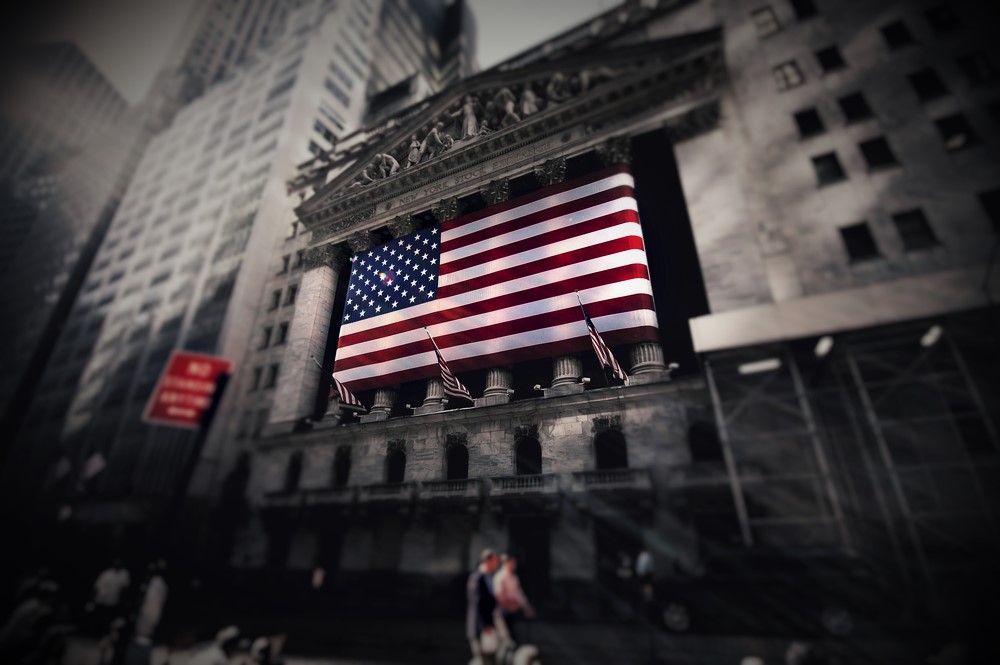Stocks sank today after the bond market threw up one of its last remaining warning flags on the economy.
The yield on the 10-year Treasury briefly dropped below the two-year Treasury’s yield this morning, the first time those yields have flipped since 2007.
It’s rare for short-term yields to rise above longer-term ones, and when it happens, market watchers call it ‘an inverted yield curve’ and brace for the possibility of a recession hitting in a year or two.
The Dow Jones Industrial Average dropped as much as 600 points by noon today.
Weak economic data around the world also unnerved investors, who flipped back into selling mode after driving a rally Tuesday on hopeful signals that the U.S.-China trade war may not be worsening so much.
Germany, Europe’s largest economy, shrank 0.1% in the spring from the first three months of the year due to the global trade war and troubles in the auto industry.
Data from China also showed that factory output, retail spending and investment weakened in July for the world’s second-largest economy.
‘The bad news for global economies is stacking up much faster than most economists thought, so trying to keep up is exhausting,’ Kevin Giddis, head of fixed income capital markets at Raymond James, wrote in a report.
The S&P 500 fell 1.7%, as of 10 a.m. Eastern time, giving back all of the prior day’s jump after the U.S. delayed some of the tariffs threatened on Chinese imports.
The Dow lost 435 points, or 1.7%, to 25,841, and the Nasdaq composite lost 1.9%.
‘The relief rally inspired by the Trump administration delaying tariffs on some Chinese imports was short lived – blink and you missed it,’ said Fiona Cincotta, senior market analyst at City Index.
Much of the market’s focus was on the U.S. yield curve, which has historically been one of the more reliable recession indicators.
Academics tend to pay the most attention to the spread between the three-month Treasury and the 10-year Treasury, which inverted in the spring.
Traders often pay more attention to the two-year and 10-year spread.
Each of the last five times the two-year and 10-year Treasury yields have inverted, a recession has followed.
The average amount of time is around 22 months, according to Raymond James.
- Macy’s plunged 17.9%, the sharpest loss in the S&P 500, after it slashed its profit forecast for the year. The retailer’s profit for the latest quarter fell short of analysts’ forecasts as it cut prices on unsold items.
- Energy stocks also sank sharply, hurt by another drop in the price of crude oil on worries that a weakening global economy will drag down demand.
- National Oilwell Varco lost 5.3%, and Schlumberger fell 5.2%. The price of benchmark U.S. crude slid $1.94, or 3.4%, to $55.16 per barrel. Brent crude, the international standard, lost $1.87 to $59.43.
- In overseas markets, Germany’s DAX dropped 2% following the weak German economic data. France’s CAC 40 fell 1.9%, and the FTSE 100 in London lost 1.4%.
- In Asia, Japan’s Nikkei 225 rose 1%, the Kospi in South Korea gained 0.7% and the Hang Seng in Hong Kong added 0.1%.
Markets have largely been in a spin cycle since Trump announced on Aug. 1 that he would impose 10% tariffs on about $300 billion in Chinese imports, which would be on top of 25% tariffs already in place on $250 billion in imports.
On Tuesday, responding to pressure from businesses and growing fears that a trade war is threatening the U.S. economy, the Trump administration is delaying most of the import taxes it planned to impose on Chinese goods and is dropping others altogether.
Investors are still worried that the trade war between the world’s two largest economies may drag on through the 2020 U.S. election and cause more economic damage.
